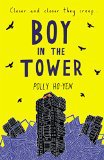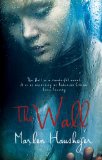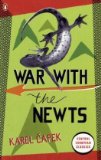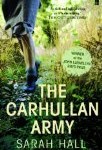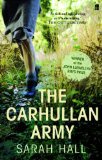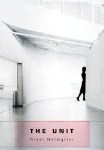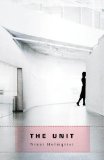Five words from the blurb: strange, plants, menacing, trapped. tower
Boy in the Tower is a modern-day version of Day of the Triffids. It is equally powerful and, although it was originally released as a book for children, it deserves a place on adult reading lists too.
Ade lives on the seventeenth floor of a tower block with his mum. One day the buildings around him start falling down and it becomes obvious that strange plants are eating their foundations. Most people evacuate, but Ade is trapped because his mum is too depressed to leave their flat. The paces quickens as the battle between Man and plants begins…
I picked up a copy of this book with the intention of reading it to my two boys, but stopped reading it to my seven-year-old when I saw a remark about Father Christmas that would have led to too many questions! Undaunted by this initial set-back my 9-year-old and I continued reading and we fell in love with it. It was impossible for either of us to put down and he couldn’t wait all day for the next installment – I caught him reading it 2 hours after his bedtime! I was equally hooked and finished the second half in one sitting.
Boy in the Tower is an example of what is missing from the majority of the book world. The central character lives in a tower block, but isn’t treated as a pariah for doing so. It also sensitively handles depression, cleverly weaving the subject into the story without it dominating or becoming distressing.
The text was simple, but that didn’t prevent it from being vivid and packed with emotion. It was cleverly paced and didn’t dumb things down for children in the way many other books do.
There are a few moments, while we are all eating our food, when, if you were looking at us sitting around the table enjoying our dinner, you would not have been able to tell that we are on the very edge of disatser. That while we are pushing forkfuls of soft rice into our mouths, the Bluchers are creeping around us in a deadly circle, ready to eat the stones and bricks of our home.
I was slightly concerned that my 9-year-old would find the concept of dangerous plants disturbing, but he loved it. This was the perfect introduction to dystopian fiction for him and an impressive addition to the genre for everyone else. I’d like to see it introduced to the school curriculum (probably for children around the age of 12) and I highly recommend it to anyone who enjoyed Day of the Triffids.
 (for children aged 10 – 14)
(for children aged 10 – 14)
 (for adults)
(for adults)
.
